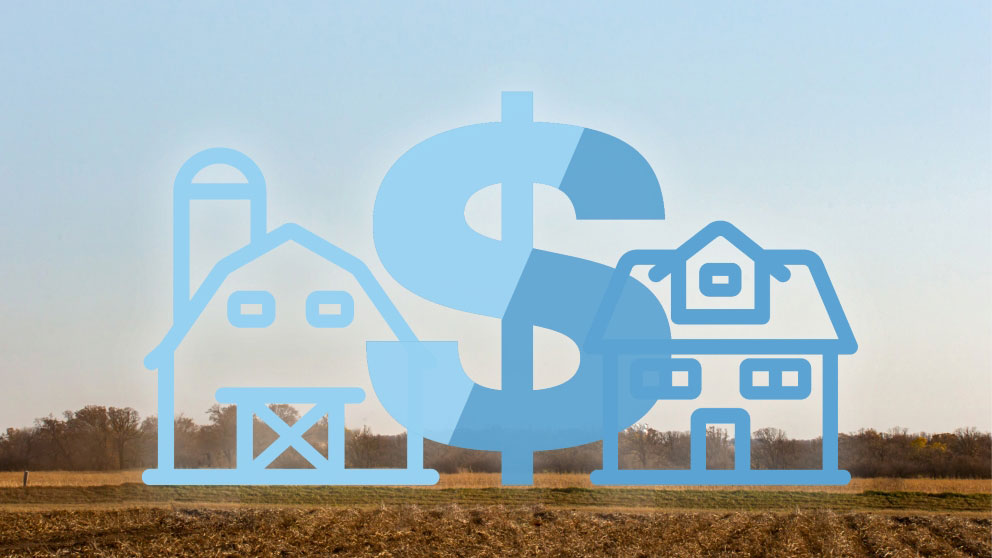All Canadian farmers take on debt – how do you manage yours?

Farmers of all descriptions will take on debt during their farming career. For some, it’s paid off nearly as quickly as they acquired it. For others, debt may follow them their entire career. In either scenario, or one unique to your farm, the natural question arises: How do you manage it?
There are many correct answers, but it must work for the farmer to manage, draw down or eliminate debt. Times of uncertainty can make debt even more precarious.
Financial food for thought
When it comes to farm debt, one main concern is cash flow, according to Jennifer Hoogendoorn, MNP’s Manager of Tax and Assurance, in Clinton, Ontario.
“What is [a new asset] going to bring to your table?” she says. “If you’re going to build a new barn, is it going to increase productivity? If so, by how much?”
A new implement shed, while attractive, should be reviewed with prudence to determine what financial benefits, if any, come with its construction.
Is it worth it?
“If the implement shed is worth it and saves wear and tear on the equipment, there still has to be a cashflow consideration of how that’s going to play out. When considering a combine purchase, the price of the shed should be included in the calculations.”
Hoogendoorn says farmers restructure existing debt for many reasons, including changing life goals, new business opportunities or lower interest rates.
But she offers a word of caution about interest rates and suggests that even though a number may seem appealing, it must be carefully considered.
“Doing something for the sake of a low interest rate does not make sense in and of itself,” she explains. “If you can’t pay for it at 5%, don’t do it at 2% unless you’re willing to sell the same time everyone else is.”
Simply covering interest payments has longer-term implications, as well. Notably, if a farmer’s financial picture changed and a sale was forced, how would they truly feel about being in such a position?
Debt doesn’t bother me
In Southern Alberta, seed grower Rick Stamp knows debt is a part of farm life. He’s been dealing with debt ever since he and his wife Marian began their operation 40 years ago. Today, their debt load is “very high, but not uncomfortably high.”
Part of that debt stems from the family’s recent infrastructure upgrades at their seed facility, retail and a string of land acquisitions.
One way they manage debt has been to lock in low interest rates instead of paying rent every year. Still, the land must be profitable, and it comes down to knowing costs of production and staying up on markets to help determine cash flow.
“With strong commodity prices, it’s easy to get caught up in saying, ‘things are going to be great, prices will go up,’” he says. “You have to be very realistic about what you’re getting into and not over-project how things will be.”
In Stamp’s geographic area — a region known for hailstorms — being hailed out is a perennial concern and is always on his mind. The weather event keeps him humble to keep his debt servicing conservative.
Focus on financial fitness
Annually, Stamp spends a full week locked in a room with his financial team, reviewing every single line item related to the farm. That strategy week clearly outlines plans for the farm’s future.
If you can’t say why you’re taking on the debt, you shouldn’t take it on. Period.
Without conversations with the trusted inner circle of farm advisors, financial planners and family members, Stamp suggests he might not be where he is today.
“You need people to tell you the truth 100%. We have it analyzed properly, so we’re not making feel-good decisions,” he says, adding that, as a farmer, if you can’t say why you are taking on the debt — either to produce more or be more efficient — you shouldn’t take it on. Period.
His conservative approach to farm debt means that after four decades, he can routinely leverage assets to expand and grow the farm for his sons, making him happy the debt is now working for him.
Bottom line
Debt is a fact of doing business in farming, but how the debt is managed, including interest rates, differs for every operation. Experts advise against increasing debt for the sake of low interest rates or just covering interest payments. Lock in low interest rates when possible, and overall, dedicate time every year to a full review of the farm’s financial picture.
Article by: Trevor Bacque

Separating business and personal finances can help avoid unnecessary headaches at tax time. These tips will help.
